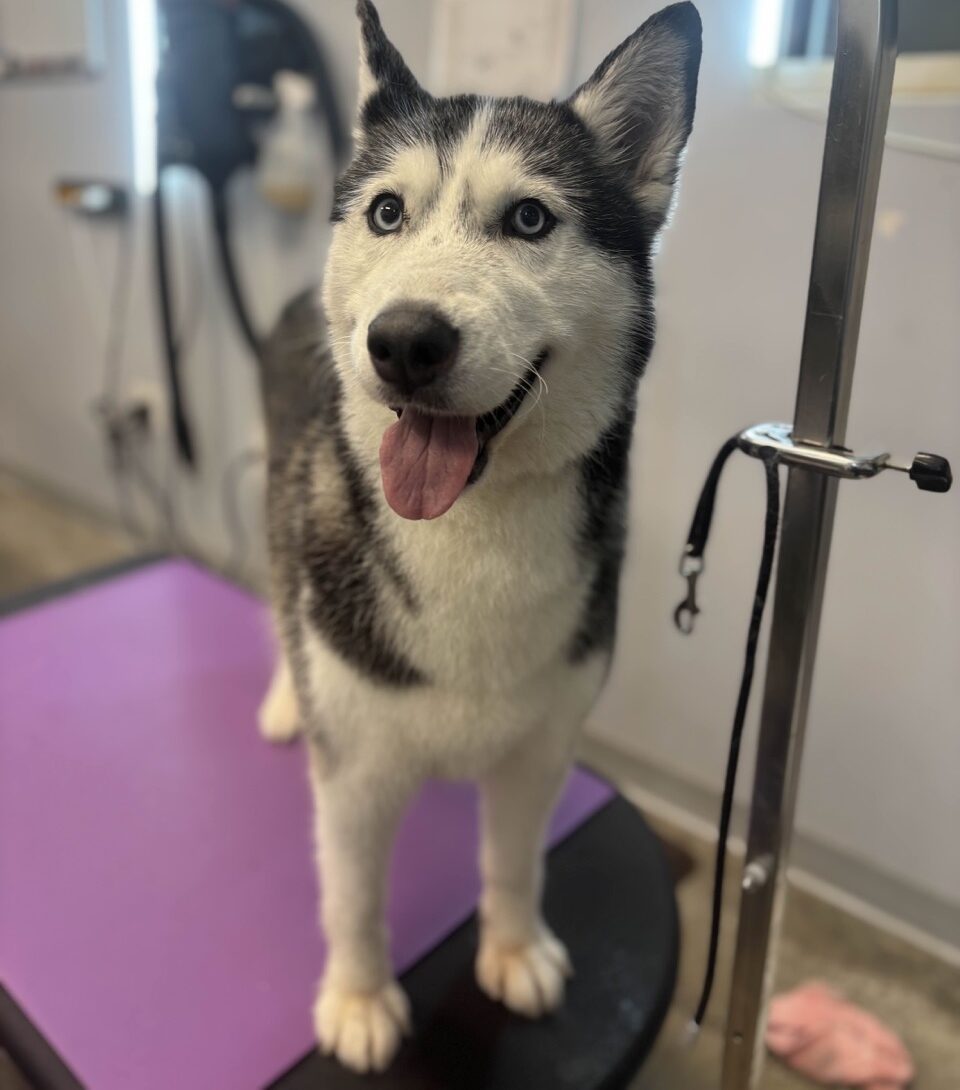
How Often Should You Groom Your Dog?
As a dog owner, grooming is more than just a cosmetic concern—it plays a key role in your pet’s health, comfort, and overall well-being. But one of the most common questions we hear from both new and seasoned pet parents is: How often should I groom my dog?
The answer isn’t one-size-fits-all. The right grooming schedule depends on your dog’s breed, coat type, activity level, and lifestyle. In this article, we’ll break down grooming needs by coat type, share expert tips, and help you build a grooming routine that keeps your dog looking and feeling their best.
Why Grooming Matters

Before diving into how often you should groom your dog, let’s look at why grooming is essential beyond just keeping your dog clean.
- Skin and Coat Health: Brushing removes dirt, distributes natural oils, prevents matting, and reduces shedding.
- Pest Control: Regular grooming can help spot ticks, fleas, or skin issues early.
- Hygiene: Bathing and trimming help prevent bad odors, especially in active or outdoor dogs.
- Comfort: Overgrown nails or matted fur can cause discomfort, pain, or even injury.
- Bonding: Grooming is a great way to build trust and strengthen your connection with your dog.
General Grooming Frequency Guidelines, How Often Should You Groom Your Dog?
Let’s start with an overview. Here’s a general guide to how often different grooming activities should be performed:
| Grooming Activity | Recommended Frequency |
| Brushing | Daily to weekly |
| Bathing | Every 4–8 weeks |
| Nail Trimming | Every 3–6 weeks |
| Ear Cleaning | Every 1–2 weeks |
| Teeth Brushing | Several times a week |
| Haircuts (if needed) | Every 4–8 weeks |
However, this varies by breed and coat type, so let’s explore that next.
Grooming by Coat Type

Short-Haired Dogs
Examples: Beagles, Boxers, Dobermans
Short-haired dogs are low-maintenance when it comes to grooming. They don’t need haircuts and rarely get mats, but they still shed and benefit from regular brushing.
Recommended grooming schedule:
- Brushing: Once a week
- Bathing: Every 6–8 weeks (more often if they get dirty or smelly)
- Nail trimming and ear cleaning: Every 3–4 weeks
Medium to Long-Haired Dogs
Examples: Golden Retrievers, Collies, Australian Shepherds
These dogs need more frequent brushing to prevent tangles and matting. Their coats can trap dirt, burrs, and debris more easily.
Recommended grooming schedule:
- Brushing: 3–4 times per weekBathing: Every 4–6 weeks
- Hair trimming: Every 6–8 weeks, especially around the ears, paws, and tail
Double-Coated Dogs
Examples: Huskies, German Shepherds, Shiba Inus
Double-coated breeds shed seasonally, usually in the spring and fall. During those periods, they need extra attention.
Recommended grooming schedule:
- Brushing: 2–3 times per week; daily during heavy shedding
- Bathing: Every 4–8 weeks
- De-shedding treatments: Recommended during seasonal coat blows (we offer this as an add-on in our dog grooming services)
Curly or Wavy-Coated Dogs
Examples: Poodles, Doodles, Portuguese Water Dogs
These coats don’t shed much but are prone to matting if not brushed regularly. They require more consistent grooming.
Recommended grooming schedule:
- Brushing: Daily to every other day
- Bathing & Haircuts: Every 4–6 weeks
- Professional grooming: Essential to maintain coat health and prevent painful mats
Hairless or Low-Shedding Breeds
Examples: Chinese Crested, Xoloitzcuintli
Hairless dogs need skin care rather than fur care. Their skin can be prone to dryness, sunburn, or breakouts.
Recommended grooming schedule, how often should you groom your dog:
- Bathing: Every 1–2 weeks
- Skin lotion or sunscreen: As needed, depending on weather and skin condition
Don’t Forget the Details
While brushing and bathing are the headliners, other parts of your dog’s body need attention too:
Nails
If you hear your dog’s nails clicking on the floor, they’re too long. Long nails can cause pain or joint issues. Trim every 3–6 weeks, or let a groomer handle it during a visit.
Ears
Floppy or hairy ears (like in Cocker Spaniels or Poodles) need more frequent cleaning to avoid infections. Use a gentle dog-specific ear cleaner every 1–2 weeks, or as recommended by your vet.
Teeth
Dental care is often overlooked, but periodontal disease is common in dogs. Brush your dog’s teeth at least 2–3 times per week using dog-safe toothpaste.
(If your pup hates toothbrushing, ask us about alternatives during your next daycare or boarding visit.)
Lifestyle Factors That May Affect Grooming Needs
Active Dogs
Dogs who swim, hike, roll in dirt, or romp through fields may need more frequent baths and brushing than their couch-loving counterparts.
Allergy-Prone Dogs
Dogs with allergies often benefit from regular bathing with hypoallergenic shampoos to reduce itching and flare-ups.
Senior Dogs or Dogs with Specific Health Needs
Older dogs or those with arthritis or skin sensitivities may need different grooming techniques, care and more frequent checks for skin changes or lumps.
Dogs with Anxiety or Behavioral Needs
If your dog doesn’t enjoy grooming or is fearful, it’s important to introduce grooming gradually and positively. You can also schedule training sessions to help condition your dog to enjoy (or at least tolerate) grooming. Start grooming your dog as a puppy to help mitigate anxiety while grooming as they grow up!
Should You Do It Yourself or See a Professional Groomer?
While regular brushing, nail trims, and baths can be done at home, professional grooming has its benefits:
- Expertise: Groomers know how to spot skin issues or abnormalities you might miss.
- Proper tools: Professional equipment helps ensure a safe, even cut and thorough clean.
- Efficiency: Groomers can complete the process faster and more comfortably for your pet.
Many dogs benefit from a combination of both: home maintenance between professional appointments. If you’re unsure about how often you should groom your dog, consult your vet or a certified groomer.
You can also track your dog’s grooming history and book appointments easily through Gingr, our client portal used for scheduling services at Collars Dog Resort.
Signs It’s Time to Groom Your Dog
Even with a routine, keep an eye out for these signs your dog may need to be groomed sooner:
- Greasy, dull, or smelly coat
- Excessive shedding or dandruff
- Matted fur
- Red or irritated skin
- Scratching or licking more than usual
- Overgrown nails
Final Thoughts: Customize the Routine for Your Dog – Grooming Frequency is Important
At the end of the day, your dog’s grooming schedule should be customized to their breed, lifestyle, and needs. How often you should groom your dog is something to discuss with your groomer for best results and coat health. For some dogs, a weekly brush and occasional bath is plenty. For others, like curly-coated breeds, a strict grooming regimen is non-negotiable.
Staying on top of grooming isn’t just about looks—it’s about keeping your dog healthy, comfortable, and happy. It’s also a great time to check in on their physical condition, bond over a shared routine, and keep them looking as good as they feel.
At Collars Dog Resort, we offer full grooming services tailored to your dog’s unique needs. Whether your pup needs a full haircut, a deshedding treatment, or just a relaxing bath and brush, we’re here to help them shine. Our expert salon staff is here to help!
Ready to schedule your next appointment? Book your grooming visit today or log in through Gingr.
Sources:
